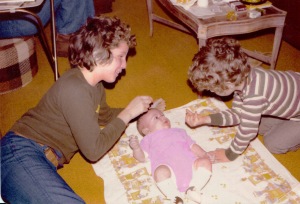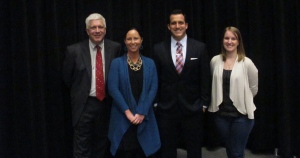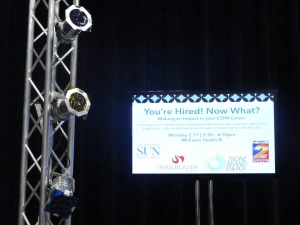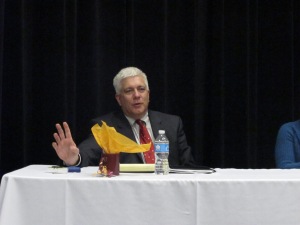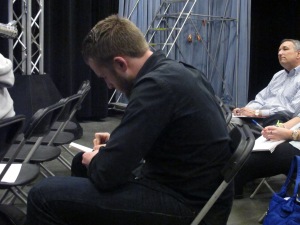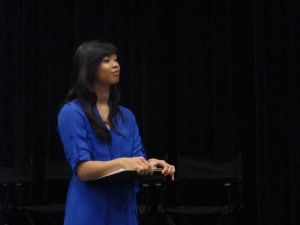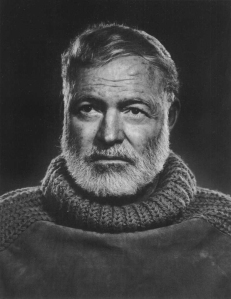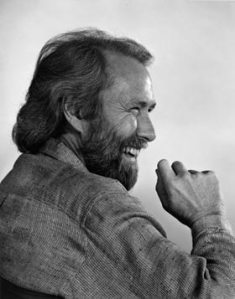Month: February 2014
You’re Hired! Now What?
Elon University is hosting its annual Professional Discovery Week hosted by the Student Professional Development Center. Events will be held through out the day on the week of February 17-20 focused on helping students progress along their professional growth. The first event of the week was “You’re Hired! Now What?” a panel discussion about what students can expect in their new job or internship.
The panel for the discussion consisted of: Paul Milton, Assistant Managing Editor, Targeted Media, Baltimore Sun Media Group; Brian Formica ’07, Main Sports Anchor, WFMY News 2; Kristin Genszler ’12, Assistance Producer and Production Manager, Trailblazer Studios; and Angi Wesson, Account Supervisor, Trone Brand Energy. All the panel members are also involved in the recruiting and hiring departments of their companies. They offered students advice on how to adjust and thrive in new workplaces, and allowed students to ask questions about what else to expect when beginning a new job.
“Be driven and be humble” Brian Formica’s response to a question about what the best things to do in the first month after entering a new job proved to summarize the theme of the discussion. Being willing to work hard while also being willing to learn are the two core characteristics of a successful new employee.
“You don’t know everything. But you better be willing to learn it.” The panel stressed the importance of initiative. The traits they look for in interns are ambition and drive. Show that you are engaged and enthusiastic and people are more likely to be impressed with you. The more eager a student is to work the more likely people will select that student for assignments. Getting assignments is the greatest way to create results that will further impress employers.
Paul Milton summed up his thoughts on the ambition of new employees with the analogy, “I’d rather you get picked off stealing second than tagged out waiting around on first.”
Another trait the panel stressed is the ability to be versatile and adapt to new or challenging environments. It is not often that someone’s dream job is the first job they get out of college. That does not mean that dream job is now out of reach. Employers sometimes simply do not need the position you want to fill. But if they offer you another job in the mean time it is worth taking.
“I may not have the director position you want, but I do have the audio or video position. And once the director leaves I’m going to move you up to that position, because I know you can do it, and you have shown your dedication and work ethic.” Said Formica on people not being offered the job they are seeking.
The panelists rounded up the session by giving some final tips for students to take to their future jobs and internships. Brian Formica stated one thing that the entire panel agreed on that is essential throughout any field of profession, “Be Kind.”
For a schedule of further events taking place this week or more information on Professional Discovery Week and the Student Professional Development Center visit their website.
Professional Discovery Week Schedule of Events
Student Professional Development Center Website
Strangers
The most difficult part of this project is overcoming the original awkwardness. It can be uncomfortable to walk up to someone you have never met and ask to take their picture. I am not a shy or timid person and I still experienced a flash of nervousness every time I approached someone. The next challenge came from pacing. Now that the subject has agreed to be in a photo, I have to take the picture and allow them to continue on. This does not leave a large amount of time for adjusting to get the right angle or making sure the aperture is at the proper setting. One or two pictures are all there is time for before the subject begins fidgeting they are so anxious to leave. If the shutter speed or aperture is incorrect then the shot is ruined and the subject is gone. Better luck next time. The best technique I discovered to overcome this is to stay in one area and photograph several people in that same area. This way the lighting stays fairly consistent from subject to subject, allowing tweaking to get the picture just right.
Another thing I found difficult was making the pictures interesting. I did not know the people and did not want to freak them out, so I couldn’t exactly ask them to strike poses. As soon as I asked to take their picture they just look straight at me and smiled. My pictures of people who were not aware they were being photographed turned out much better. They felt more natural, and typically felt like they were a captured moment rather than a produced one. I just had to reconcile myself with the idea of being a creep.
ISO 400, f/3.5, 1/100
 ISO 1600, f/6.3, 1/60
ISO 1600, f/6.3, 1/60
The photographer I selected to study is Yousuf Karsh. Karsh worked throughout the 20th century as a photographer and was well renowned for his work. Karsh’s specialty was portraits; almost all of his most popular works were portraits taken of a single person. One of his first portraits was of Winston Churchill, which would be the photograph that launched his career. My favorite piece that he created is the portrait of Ernest Hemingway.
It is very simple; just a straight on shot on Ernest. His use of light and shadow makes the photograph incredibly striking. The background is black so as to not distract the viewer. The subject is lit from multiple angles making him appear somewhat radiant. It almost makes me feel like Ernest is glowing or emanating his own light. The lighting always focuses on the face of the subject, ensuring that the viewer’s eyes will be drawn to it. All of his works allow his audience to peek into the lives of his subjects. He captures not only their image but also captures a sliver of who they are. His work feels intimate; as if we are glimpsing in on an extremely personal moment in the lives of his subjects. This is very apparent in his portrait of Jim Henson. In this portrait Jim is smiling, but not in a way that seems forced. He is not smiling for the camera. It is a genuine smile. He is looking away from the camera and appears to be laughing.
This is exactly the side of him that represents who he is. He enjoyed bringing happiness to people and this portrait captures that. For more information about Yousuf and his life or to see more of his work visit his site at http://www.karsh.org/#
